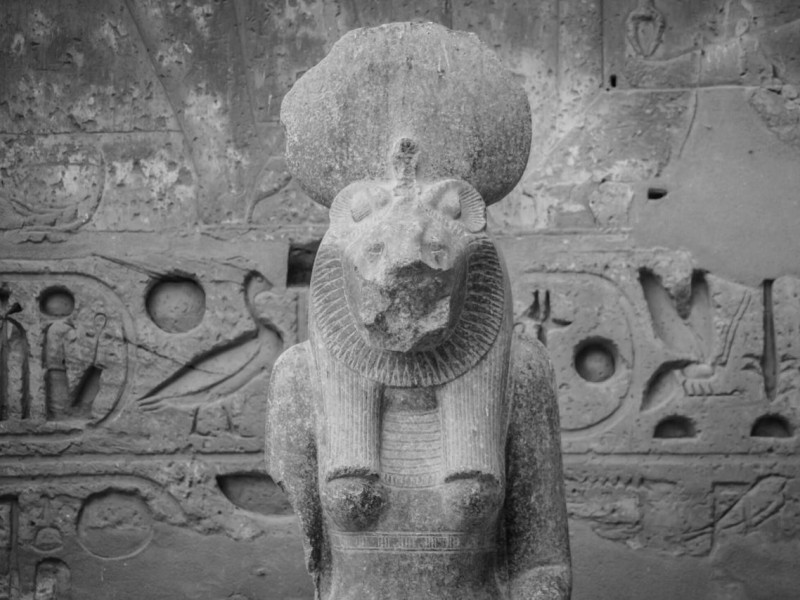Snake Goddess
In 1903, the archaeologist Sir Arthur Evans discovered figurines of women in what was possibly a temple within the palace of Knossos (Cnossus), in Crete. The figurines were not found whole, but they were carefully reassembled and reconstructed. The figurines have been named the "Snake Goddess".
The Snake Goddesses were created during the Middle Minoan period, perhaps in 1700 BC. Crete and their palaces had reached the height of their artistic level.
There has been much speculation over the figurine of who this person was. Some experts have suggested that she was simply a snake charmer or snake handler, while others say claimed was a priestess. Most people believed her to be a goddess, and people these days usually refer to her as the Snake Goddess. There is no actual proof that the statuette depicts a goddess. With no literature to support that the statuette was indeed a goddess, we can only guess who she might have been.
The two figurines were similar, but have different arm gestures.
One figurine shows a woman in unusual dress with overlapping flounces, but her breasts are bared. On her head, she wears a hat with a sitting cat on top. She is also holding up two small snakes, one in each hand, which reminds us of the Bronze Age goddess known as the Mistress of Animals (Potnia theron), holding a wild animal in each hand, often a lion, stag, or bird.
If we see her as a goddess, then the two types of animals gives clues as to her attributes. However, what we know is really only speculation.
The snakes she is holding up can have many different meanings. Because a snake can bring swift death with their poison, she could be seen as the goddess of death or of the dead.
Snakes, as well as the cat, can also symbolise the afterlife.
On the other hand, snakes can also symbolise life, because snakes are often associated with healing.
Adding the cat with the snakes, the figurine may depict a goddess of sexuality or fertility. Her sexual attributes were emphasized with the exposure of her full, rounded breasts. This may indicated that she is a mother goddess.
There is another figurine of the Snake Goddess. This slightly taller figurine wears a different type of dress, but like the first one I had mentioned before, her breasts are exposed. The second figurine wears a very tall hat.
Whereas the first figurine shows the goddess holding up two small snakes in her hands, the second figure has a very long snake with its head in her right hand. The snake entwines up her right arm, over her shoulder, down one side of her back, then across her buttocks; afterwards, up the other side of her back, over her left shoulder, and entwined her around her left arm, with its tail in her left hand.
The head of the second snake is found on top of her hat. Following its long body down the hat, in front of the woman's left ear, curving around the outside of her left breast, before continuing down until below her waist, across her belly, and back up the right side of woman's body. The snake's tail ends up looping around the woman's right ear.
The statuettes depict either that there is a single goddess in two different types of costumes or the Minoans worshipped two snake goddesses.
Did the Snake Goddess survive after the Dorian Invasion?
People have wondered if one of the goddesses in the Greek myths inherited the role of the Minoan snake goddess. Could she be Artemis, Athena, Rhea, Cybele, or even Demeter?
Some Cretan goddesses such as the childbirth goddess Eleuthia and the war goddess Enyo survived to the classical period. As far as I can tell, there is no similarity between the Snake Goddess and that of the goddesses who survived in the Greek mythology and literature that we have today.
In Archaic and Classical Greek art, goddesses were rarely seen with serpents.
Related Information
Related Articles
Potnia theron (Mistress of Animals).
By Jimmy Joe







